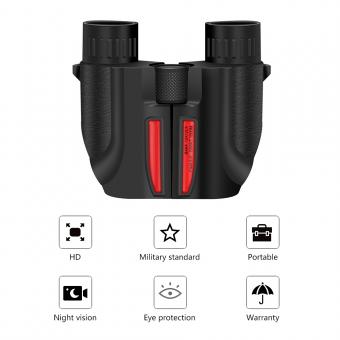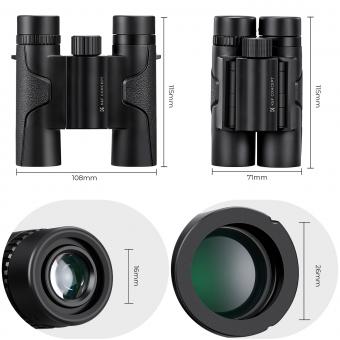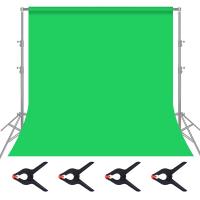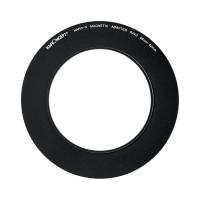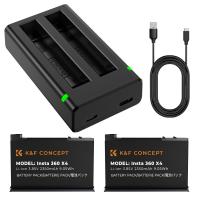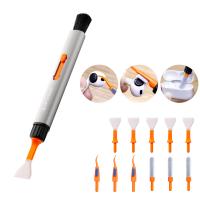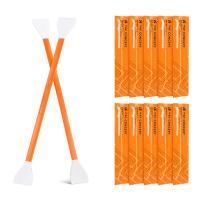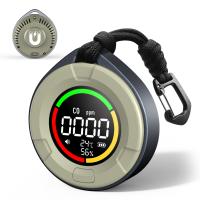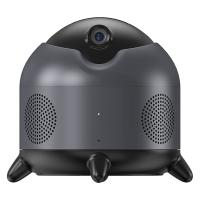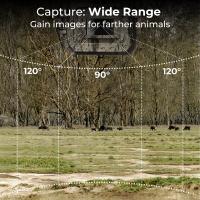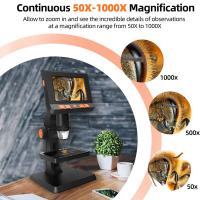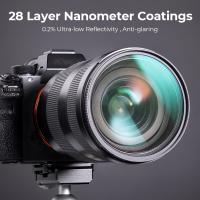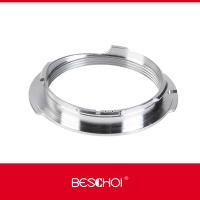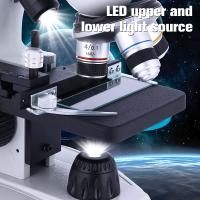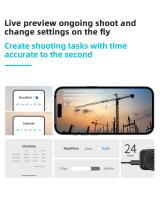Binoculars What To Look For When Buying ?
When buying binoculars, there are several factors to consider. First, consider the magnification power and objective lens diameter. The magnification power determines how much closer the object will appear, while the objective lens diameter determines how much light enters the binoculars. A larger objective lens diameter will provide a brighter image.
Next, consider the field of view, which is the width of the area visible through the binoculars. A wider field of view is better for tracking moving objects. Also, consider the exit pupil, which is the diameter of the beam of light that enters your eye. A larger exit pupil will provide a brighter image, especially in low light conditions.
Other factors to consider include the type of prism used (roof or porro), the quality of the lenses and coatings, the weight and size of the binoculars, and the durability and waterproofing of the binoculars. It's also important to consider your budget and intended use for the binoculars.
1、 Magnification and Objective Lens Diameter
When buying binoculars, there are several factors to consider to ensure that you get the best value for your money. One of the most important factors to consider is the magnification and objective lens diameter.
Magnification refers to the degree to which the binoculars can enlarge an image. The higher the magnification, the closer the image appears. However, high magnification can also result in a narrower field of view and reduced image brightness. Therefore, it is important to strike a balance between magnification and image quality.
The objective lens diameter refers to the size of the front lens element of the binoculars. A larger objective lens diameter allows more light to enter the binoculars, resulting in brighter and clearer images. However, larger objective lenses also mean heavier and bulkier binoculars.
In recent years, there has been a trend towards compact and lightweight binoculars with high-quality optics. These binoculars often feature advanced coatings on the lenses to improve image brightness and clarity. Additionally, some binoculars now come with image stabilization technology to reduce hand shake and improve image stability.
Ultimately, the best binoculars for you will depend on your specific needs and preferences. Consider factors such as intended use, budget, and personal comfort when making your decision.
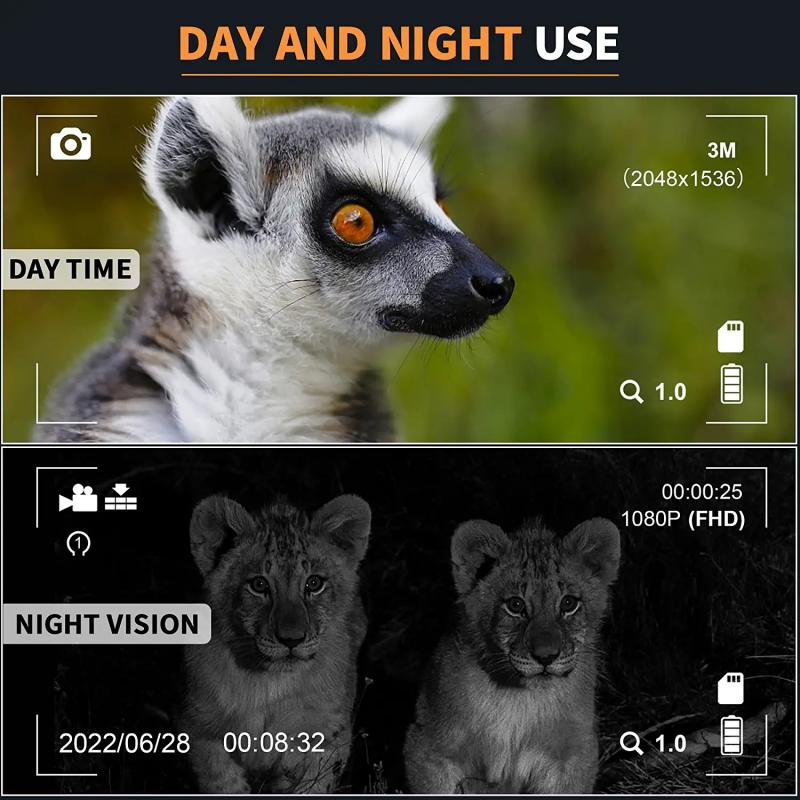
2、 Prism Type
Binoculars are an essential tool for birdwatching, hunting, hiking, and other outdoor activities. When buying binoculars, it is important to consider several factors to ensure that you get the best value for your money. One of the most critical factors to consider is the prism type.
Prisms are the optical components that reflect and refract light, allowing you to see a magnified image through the binoculars. There are two main types of prisms used in binoculars: roof prisms and Porro prisms. Roof prisms are more compact and lightweight, making them ideal for travel and outdoor activities. They also offer a straight-line optical path, resulting in a more streamlined design. Porro prisms, on the other hand, offer a wider field of view and better depth perception. They are also more affordable than roof prisms.
When choosing between roof and Porro prisms, it is important to consider your specific needs and preferences. If you prioritize portability and ease of use, roof prisms may be the better option. However, if you value image quality and a wider field of view, Porro prisms may be the way to go.
In recent years, there has been a growing trend towards using high-quality prisms made from premium materials such as ED (Extra-low Dispersion) glass. These prisms offer superior image quality, with sharper and more vibrant colors, and reduced chromatic aberration. While they may be more expensive than standard prisms, they are worth the investment for serious birdwatchers and outdoor enthusiasts.
In conclusion, when buying binoculars, it is important to consider the prism type, as it can significantly impact image quality, field of view, and overall performance. Whether you choose roof or Porro prisms, or opt for premium materials such as ED glass, make sure to do your research and choose a pair of binoculars that meet your specific needs and preferences.
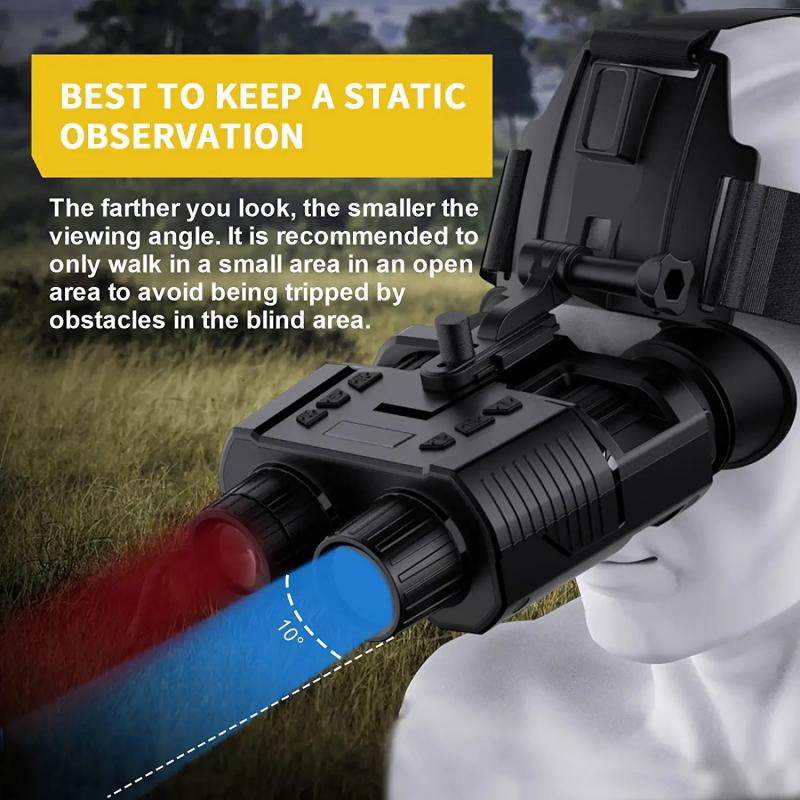
3、 Coatings and Image Quality
"Coatings and Image Quality" are the two most important factors to consider when buying binoculars. Coatings refer to the layers of anti-reflective materials that are applied to the lenses to reduce glare and improve image clarity. The quality of coatings can vary greatly between different binocular models and brands, so it's important to look for binoculars with high-quality coatings that provide clear, bright images.
Image quality is also crucial when choosing binoculars. Look for binoculars with high-quality optics that provide sharp, clear images with accurate colors and good contrast. The size of the objective lens, which is the lens at the front of the binoculars, also plays a role in image quality. Larger objective lenses allow more light to enter the binoculars, resulting in brighter images.
In addition to coatings and image quality, there are other factors to consider when buying binoculars, such as magnification, field of view, and durability. It's also important to consider the intended use of the binoculars, as different activities may require different features.
The latest point of view on buying binoculars is to consider the environmental impact of the product. Look for binoculars made from sustainable materials and from companies that prioritize eco-friendly practices. Additionally, consider the longevity of the product and whether it can be repaired or recycled at the end of its lifespan. By considering both the quality of the product and its impact on the environment, you can make a more informed and responsible purchasing decision.
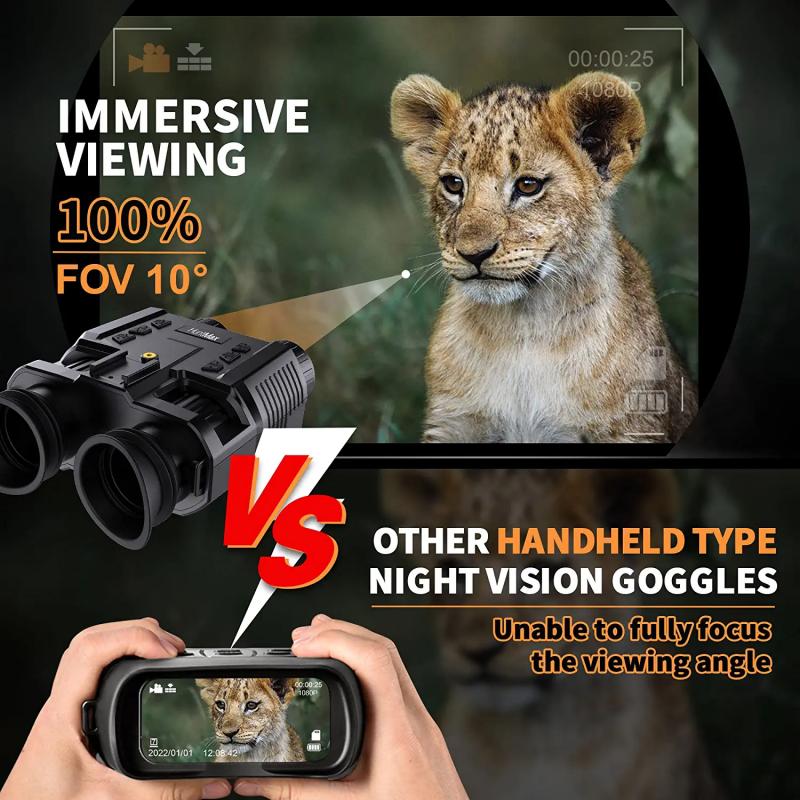
4、 Field of View and Eye Relief
Binoculars are an essential tool for birdwatching, hunting, hiking, and other outdoor activities. When buying binoculars, it is important to consider several factors to ensure that you get the best value for your money. Two of the most important factors to consider are the field of view and eye relief.
Field of view refers to the width of the area that you can see through the binoculars. A wider field of view is generally better, as it allows you to see more of your surroundings and track moving objects more easily. However, a wider field of view may also result in some distortion around the edges of the image.
Eye relief refers to the distance between the eyepiece and your eye when the binoculars are in use. A longer eye relief is generally better, as it allows you to use the binoculars while wearing glasses or sunglasses. However, a longer eye relief may also result in a narrower field of view.
In addition to these factors, it is also important to consider the quality of the optics, the durability of the binoculars, and the size and weight of the binoculars. The latest point of view is that advancements in technology have led to the development of binoculars with improved image stabilization, low-light performance, and waterproofing.
Overall, when buying binoculars, it is important to consider your specific needs and preferences, as well as the quality and features of the binoculars themselves. By taking the time to research and compare different models, you can find the binoculars that are best suited to your needs and budget.













